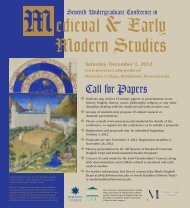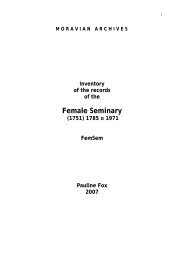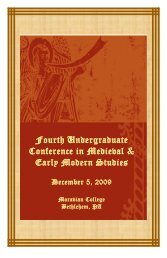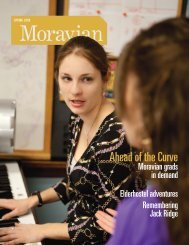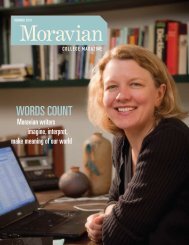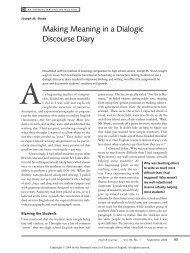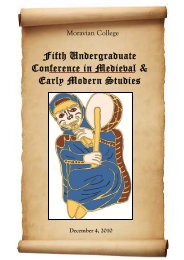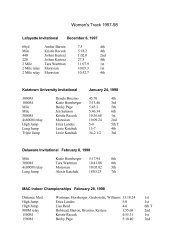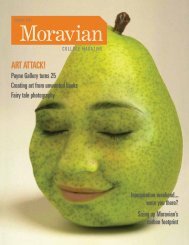Explorations of the Collatz Conjecture - Moravian College
Explorations of the Collatz Conjecture - Moravian College
Explorations of the Collatz Conjecture - Moravian College
Create successful ePaper yourself
Turn your PDF publications into a flip-book with our unique Google optimized e-Paper software.
2 = 2 k − 2 r 1<br />
1 = 2 k−1 − 2 r 1−1<br />
Which implies that k = 2 and r 1<br />
= 1 which is <strong>the</strong> case where our two parity<br />
sequences are 〈10〉 and 〈01〉.<br />
Case 2: Suppose that <strong>the</strong> second in <strong>the</strong> pair starts with 1. That makes r 1 = a 1 −1<br />
and δ 1 = −1, which gives us<br />
(−1) ( 2 2a1−2 − 2 ) a 1−1<br />
= 2 k − 3<br />
The left side <strong>of</strong> this equation will always be even, whereas <strong>the</strong> right side will<br />
always be odd. This is a contradiction.<br />
Therefore, a block or string prefix will only have a single one if it is <strong>of</strong> length<br />
two and <strong>of</strong> <strong>the</strong> form specified above.<br />
□<br />
We can continue our argument above by writing similar pro<strong>of</strong>s that will show<br />
us all <strong>of</strong> <strong>the</strong> blocks that contain two ones, all <strong>of</strong> <strong>the</strong> blocks that contain three ones,<br />
and so on. As we increase <strong>the</strong> number <strong>of</strong> ones that <strong>the</strong> sequence has, <strong>the</strong> number<br />
<strong>of</strong> cases that <strong>the</strong> pro<strong>of</strong> has grows rapidly, to <strong>the</strong> point that it is unreasonable to<br />
continue using this method much beyond <strong>the</strong> case <strong>of</strong> a block or string prefix with<br />
three ones.<br />
From our block and string data in Tables 4.1 and 4.2, we have found values for<br />
<strong>the</strong> minimum, maximum and average value <strong>of</strong> our n k<br />
ratio. We believe that <strong>the</strong>se<br />
values will approximate <strong>the</strong> actual values for all blocks and strings. Therefore, we<br />
have <strong>the</strong> following conjecture.<br />
39




